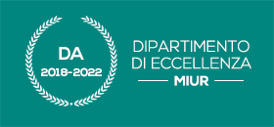Academic coordinator
Prof. Dr.-Ing. Michael Dumbser
Joint board of lecturers
Prof. S. Siboni, Prof. V. Casulli, Prof. M. Dumbser, Prof. A. Piccolroaz, Prof. L. Fraccarollo, Prof. P. Scardi, Prof. L. Deseri, Prof. D. Bigoni, Prof. A. Bellin, Prof. R. Rigon, Prof. A. Siviglia, Prof. M. Toffolon, Prof. D. Zardi, Prof. L. Giovannini, Prof. A. Vitti, Prof. G. Zolezzi, Prof. N. Pugno
Rankings
The rankings will be published by Firday 10 December, 2021.
Summary
Modelling and simulation is essential nowadays for the solution of complex nonlinear problems and is of fundamental importance in many areas of our everyday life. Models and computer simulations allow to forecast complex processes, also in areas where experiments are unfeasible or very difficult. The elite post-graduate honors program Modelling & Simulation allows graduated MSc students from the areas of engineering, mathematics and physics to gain additional and specific knowledge in the fields of applied mathematics, computational mechanics and scientific computing. The honors program Modelling & Simulation is an ideal preparation for a subsequent PhD program in this area. All courses can be officially recognized as credits for the DICAM PhD program. It furthermore prepares students for complex simulations in research & development departments of big international companies, international engineering consultancy institutions and service providers. To further increase the transfer of knowledge between senior academics and students, Modelling & Simulation is endowed with a mentoring program.
COVID-19 pandemic
Due to the COVID-19 pandemic, all courses of the honours program will be also offered online. Courses will be offered either under the form of blended teaching, with some students present and others online, or as pure online courses.
University of Trento and DICAM
UniTN is a research-intensive University located in the Province of Trento in the North of Italy and is surrounded by the Dolomiti mountains, a UNESCO world heritage site. UniTN is constantly ranked among the best Italian Universities, also thanks to its ability to attract competitive European funding, in particular ERC grants of excellence. Among the key competencies of DICAM are theoretical and computational mechanics, computational physics, applied mathematics and scientific computing, which are the pillars of the honors program Modelling & Simulation.
Numerus clausus and selection procedure
The number of available places in the elite post-graduate program is limited (numerus clausus). The exact number is fixed every year in the official call for applications. Excellent MSc students of engineering, mathematics and physics at the end of their second year of studies can apply every year in July-September. Selections are made in October by a commission nominated by the CdD. The MSc degree (LM) must be obtained until March of the following year. The entrance test consists in a detailed motivation letter written by the student, an examination of his or her previous academic track record and an oral interview.
Why is this honors program special?
All courses of the post-graduate program can be fully recognized as credits in a subsequent DICAM PhD program. The courses of the honors program are also attended by international PhD students and post-doctoral research fellows, creating a highly international and interdisciplinary atmosphere. Visiting professors from leading international top universities are teaching in this honors program.
Once admitted, no fees are charged.
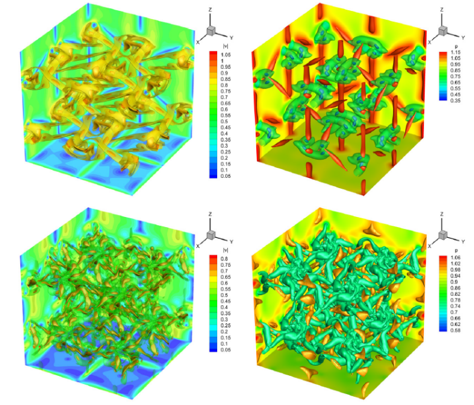
Short description of the contents of the honors program Modelling & Simulation
This 6-9 months 30 ECTS honors program is taught in English and consists mainly of compact intensive block courses and a compulsory cycle of seminars. The student can choose 30 ECTS out of the offered courses. About 4-5 weeks are foreseen for most courses, with 2-3 weeks of classroom teaching plus 2-3 weeks of guided exercises and self-study at home, with the final exam at the end of the fifth week. At the end of the program an official certificate is issued by UniTN.
The exact composition and number of courses offered to the students are chosen once per year before the official call for applications is published.
1) Advanced methods in theoretical mechanics
Course not activated a.a. 2021/22
This advanced course on theoretical mechanics exhibits the rigorous mathematical foundations of modern mechanics, including the underlying variational formulation of Lagrangian mechanics and the key elements of Hamiltonian mechanics. The course furthermore contains a detailed discussion of the stability of equilibrium solutions of holonomic systems in particular and nonlinear ordinary differential equations in general. In this course also a rigorous mathematical formalism for the derivation of the equations of continuum mechanics and thermodynamics is presented.
2) Advanced numerical methods for hyperbolic conservation laws and geophysical flows
V. Casulli, M. Dumbser
70 h, 8.75 CUF
The models derived in the previous course 1a) express so-called first principles, like the conservation of mass, momentum and energy and the second law of thermodynamics, which are mathematically expressed via systems of hyperbolic conservation laws. This course deals with advanced numerical methods for the solution of hyperbolic conservation laws in multiple space dimensions and their application to continuum mechanics of solids and fluids, to multi-physics problems and also to large scale geophysical free-surface and sub-surface flows. Practical hands-on sessions with computer laboratory exercises are provided for all numerical algorithms presented in this course.
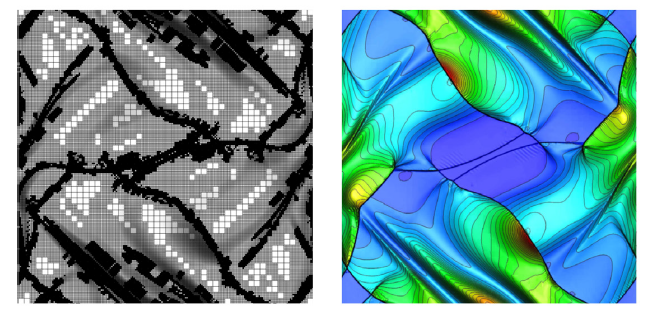
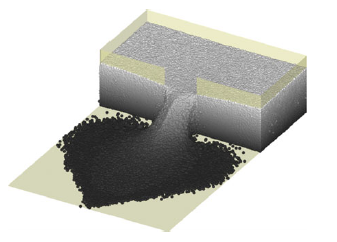
3) Advanced computational solid mechanics
A. Piccolroaz
60h, 7.5 CUF
This course introduces advanced computational methods for linear and nonlinear solid mechanics. In particular, the behavior and stability of complex structures like plates and shells are analyzed in detail. The course also deals with the problems associated with thermo-elasticity and the optimization of structures. The course makes use of the variational formulation of Lagrangian mechanics, as derived in course 1).

4) Understanding turbulence dynamics by simulations and measurements
Michael Dumbser, Luigi Fraccarollo, Lorenzo Giovannini, Sebastiano Piccolroaz, Marco Toffolon, Dino Zardi
32 h, 4.0 CUF
Turbulence is one of the last mysteries in nonlinear continuum mechanics that is not fully understood yet. In this course, we provide an introduction to turbulence processes by coupling the analysis of the most used numerical models (from the k-epsilon model to large-eddy simulations, LES) and the interpretation of real-world measurements (with a special focus on atmospheric processes and stratified water bodies such as lakes). The course covers theoretical and numerical aspects of turbulence modelling and introduces the necessary statistical tools to study turbulence observed in the real world and laboratory experiments.
5) Molecular Dynamics: a primer with elements of statistical mechanics
P. Scardi
16 h, 2.0 CUF
The course introduces to Molecular Dynamics, as a modelling tool for solid and fluid mechanics. Starting from general knowledge of thermodynamics and mechanics, the course introduces many-body problems, providing the elements of statistical mechanics at the basis of Molecular Dynamics.
Theoretical elements include the role and choice of potentials, basic principles of the dynamic algorithms underlying the MD simulations, and an outline of multiscale problems.
Following a "hands-on" philosophy, the course includes the use of specific software for MD with practical examples: applications include fluids and transport phenomena, from the atomic scale to granular media, and solid mechanics, for the study of plasticity, fracture, friction and clustering phenomena.
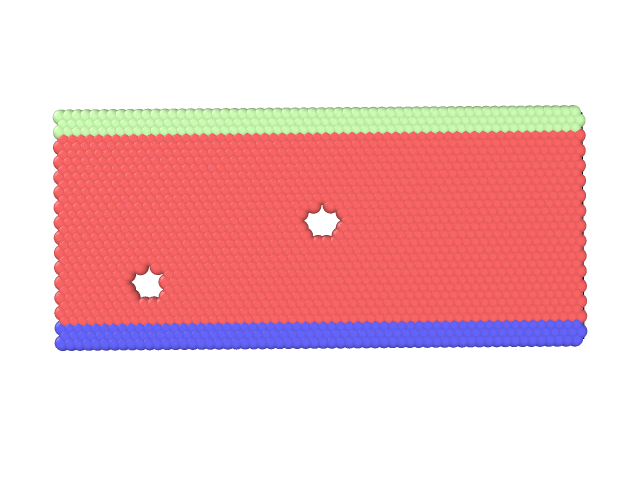
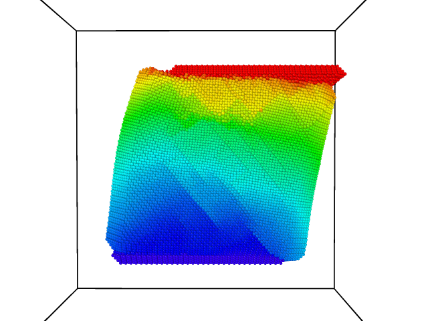
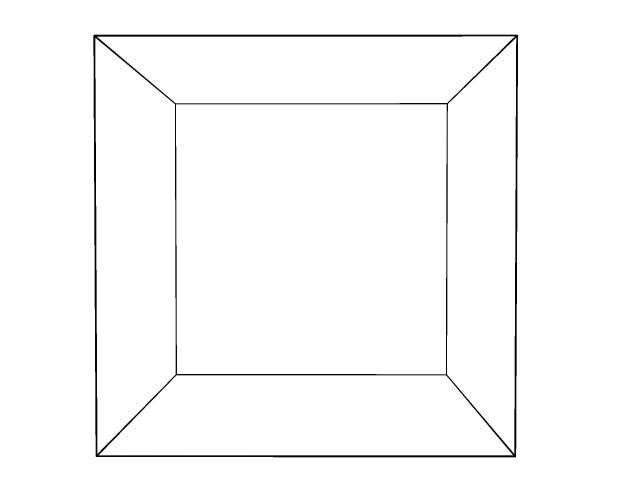
6) Introductory nonlinear mechanics of soft biological tissues
L. Deseri
30 h, 4.0 CUF
This course is directed at honour program, doctoral, postdoctoral and other researchers interested in advancing their knowledge of continuum mechanics beyond classical incompressible, nonlinear elastic solids. The course will begin with a review of fundamental principles of continuum mechanics and move
on to modeling the behavior of materials with evolving internal structure, with particular regards to soft biological tissues. Topics such as the Multiphysics of biomembranes at a small length scale, growth and remodeling in biological tissues may be covered in class.
7a) Modelling hydrological systems with Geoframe
R. Rigon, G. Formetta
48 h, 6 CUF
The course is devoted to young researchers and aims at enabling the participants to run their own simulations of complex catchments and estimate the hydrological budget components, including evapo-transpiration and rainfall runoff. In particular, the course deals with advanced methods for the spatial and temporal interpolation of hydro-meteorological datasets, as well as model and parameter calibration at the aid of modern particle swarming tools for nonconvex optimization. The course also introduces advanced numerical methods for the solution of the Richards equation in order to simulate porous media flow in variably saturated porous media.
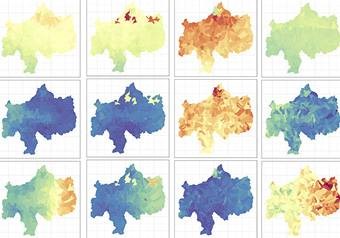
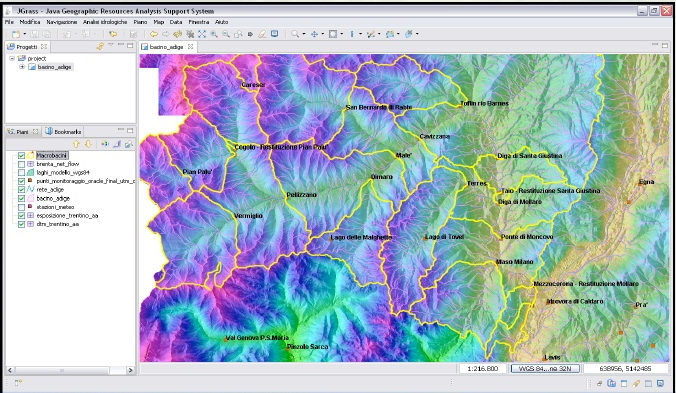
7b) Modeling flow and transport in porous media
A. Bellin, A. Marzadri
Course not activated a.a. 2021/22
The course deals with modeling of flow and transport processes in heterogeneous porous media seen as a disordered media showing spatially variable properties, which are modeled as Spatial Random Functions. Applications are in modeling migration of contaminants in the earth subsurface, CO2 sequestration, oil reservoirs, as well as processes relevant for industrial applications in porous media. The course will also introduce to the modeling of transport processes in biological tissues. Courses 7a) and 7b) are offered in alternating years.

8) Modelling and simulation of integrated river eco-morphodynamics
W. Bertoldi, A. Siviglia, M. Toffolon, G. Zolezzi
32 h, 4.0 CUF
River morphodynamics is a true multi-scale and multi-physics problem, where the fluid flow in the river interacts with the river bed and suspended sediments composed of small to medium size grains of granular solid material. Additional complexity is introduced when considering the coupling with the biological component (mostly vegetation), which acts as an ecosystem engineer through direct and indirect feedbacks. This course presents advanced analytical and numerical models, as well as modern approaches of reduced complexity modelling for the description of eco-morphodynamic processes.
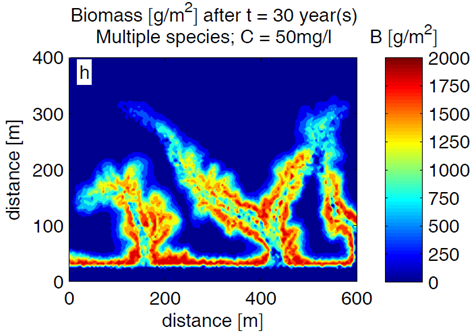
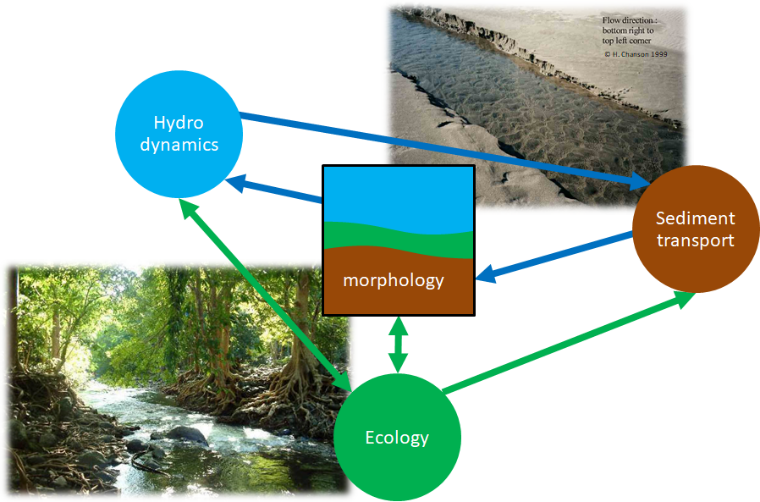
9) Numerical modelling of weather and climate
S. Bordoni, L. Giovannini, D. Zardi
54 h, 6.0 CUF
This course provides a general introduction to weather and climate models, starting from the formulation from the governing physical principles, parameterizations and input datasets. It provides examples of application to weather prediction and climate projections and to the use of weather and climate models in different fields relevant to environmental engineering. Practical exercises on the application of meteorological models are carried out.
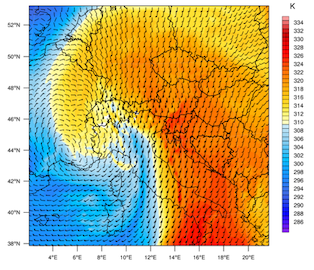
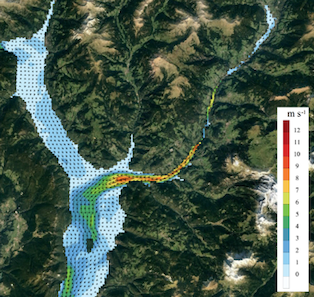
10) Remote sensing and advanced geomatics for environmental applications
G.B. Benciolini, A. Vitti
20 h, 2.5 CUF
This course deals with remote sensing, advanced methods for feature extraction and surface modelling, indirect retrieval of physical quantities from satellite measurements. The course provides an overview of satellite missions for Earth observation and environmental applications. Retrieval of physical quantities from satellite includes riverbed bathymetry from multi-spectral images and snow water equivalent from radar data. Digital surface models (DSM) are at the basis for the geometry definition in all numerical simulations of geophysical problems and in environmental engineering. The course deals with digital surface modelling via triangulated irregular network (TIN) and grids, DSM generation from stereo satellite images and with detection and modelling of geometric features of digital surfaces. The course presents variational models for segmentation and discontinuity detection in images and DSM.

S) Cycle of seminars on recent advances in theoretical and computational methods for nonlinear mechanics and their applications in geoscience and engineering
The cycle of seminars consists in a series of advanced lectures, showing the students the current frontiers in theoretical and computational methods for nonlinear mechanics, ranging from continuum mechanics of fluids and solids over statistical mechanics and molecular dynamics to uncertainty quantification and multi-physics problems. Lecturers in this cycle of seminars are among the leading international experts in their fields and are invited from international top universities. Attendance of the seminars is compulsory.
This honors program is co-funded by the MIUR departments of excellence initiative 2018-2022
